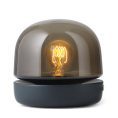Asian American women may be well-educated and hardworking, but they are still subject to harmful stereotypes in the workplace. One common stereotype is that they’re normally smart in STEM related fields and rich, despite the fact that they may be disproportionately underpaid for their function. Another is normally that they’re docile, submissive and hypersexual, an outline that can bring about sexual nuisance and even physical violence.
For that reason, Asian females often look pressure to adapt to the targets of major groups – or risk being ostracized from professional circles. Ahmed has found that when ever she really does speak up, her colleagues sometimes understand her manly behaviour as threatening and retaliate https://elitemailorderbrides.com/thaifriendly-review against her. This racialized reaction has led her to find it easier to simply conform with expectations rather than stand up meant for herself, even though the outcome can be damaging to her business.
Often , these kinds of stereotypical illustrations of Hard anodized cookware women are rooted in racist assumptions about their homelands and cultures. For example , the docile and hypersexual picture of Asian girls has roots in the 19th-century Page Functions and other migration laws and regulations that allowed soldiers to bring back docile Oriental “war brides” to America following wars in Asia. These insurance policies eroticized Cookware women by simply characterizing these people as equally exotic and disease service providers, simultaneously villainizing and objectifying all of them.
Much more modern times, stereotypes about Asian women of all ages have become more complicated. They’re nowadays seen as a mix https://www.target.com/p/not-so-perfect-strangers-by-l-s-stratton-paperback/-/A-88270617 of both a “model minority” and a “tiger mom. ” This twice stigma causes it to become harder for Oriental women to navigate the workplace. The unit minority stereotype can help them academically but hold them lower back career-wise by stopping them coming from speaking up or signing up for leadership jobs. Meanwhile, the tiger mommy stereotype could cause them to stand before too much of the burden for group projects or be forced in to being the sole voice of their ethnicity in meetings, which in turn limits the opportunity to boost.
The polarizing method that we figure out gender since either virginal equals very good or hypersexual equals undesirable is particularly bad for Asian women, who happen to be trapped in the latter prison. Is no wonder the particular stereotypes contribute to all their hypersexualization and objectification, and could also lead to love-making assault and violence.

The solution to these skewed perceptions requires a mixture of strategies. There is abundant groundwork showing the importance of mentorship, networking and social support with respect to emerging Oriental female leaders. But it may be also crucial to address the underlying racism and sexism that fuel these kinds of stereotypes, and this can be a self fulfilling prophecy. To do so, we need to discuss the ways that white persons and other superior groups see Asians – including the nuances of culture that can be misinterpreted by individuals outside their community. We need to know that the bias that lead to these types of harmful stereotypes have a direct link to the disproportionate amount of physical violence against Cookware women. It has time to start that connection.


























